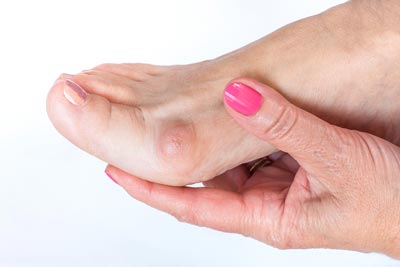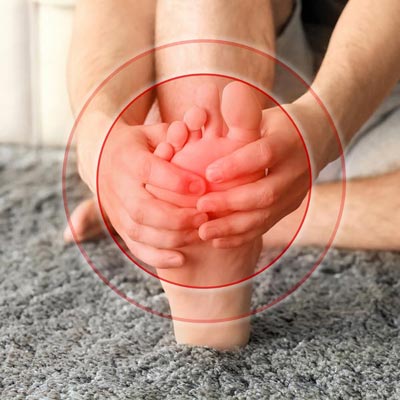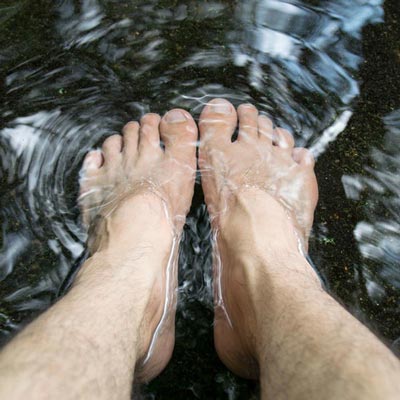Bunion Pain Relief: Tips and Remedies for Managing Discomfort
Bunions are a common foot condition that many people experience at some point in their lives. It is characterized by a bony bump on the base of the big toe, which can cause pain and discomfort while walking or wearing shoes. The good news is, that there are various ways to manage bunion pain and discomfort without having to resort to surgery. In this article, we will discuss tips and remedies for bunion pain relief that you can try at home.
Understanding Bunions
To tackle bunion treatments effectively, a grasp of what bunions entail and their origins is essential. A bunion manifests when the joint at the foundation of the big toe misaligns, prompting the big toe to veer towards the second toe. Consequently, this misalignment forms a noticeable bony protrusion on the foot’s side, leading to inflammation and discomfort. While genetics play a significant role in the development of bunions, external factors such as inappropriate footwear or specific health issues, including arthritis, can also contribute to their occurrence.

Bunion Treatment
Tips for Bunion Pain Relief
- Choosing the Right Footwear: The primary action for mitigating discomfort caused by bunions involves selecting appropriate footwear. Shoes that provide ample room for the toes and avoid squeezing them are vital. Instead of high heels or shoes with a narrow front, look for styles that are broader and feature a lower heel to minimize exacerbation of pain.
- Implement Padding for Protection: To shield the bunion from the constant friction inside your shoe, consider applying protective padding. Options like gel pads, moleskin, or soft felt pads can offer the necessary cushioning, aiding in friction reduction at the bunion site.
- Cold Therapy: Applying cold packs to the affected area can be effective in diminishing swelling and easing pain. A routine of cold therapy involves placing ice on the bunion for durations of 10-15 minutes, repeating this several times throughout the day for best results.
- Gentle Massage: Administering a soft massage to the area surrounding the bunion can aid in stimulating blood circulation and relaxing tight tissues, alleviating discomfort and pain.
- Over-the-counter remedies: For pain management, non-prescription anti-inflammatory medication, such as ibuprofen, can provide significant relief from discomfort and inflammation caused by bunions.
- Consider Shoe Inserts: Utilizing orthotic devices or inserts designed for arch support can play a crucial role in distributing foot pressure more evenly, offering relief from bunion-induced pain.
- Employ Toe Separators: The use of a small separator between the big toe and its neighbor can aid in aligning the big toe properly, which in turn reduces the strain placed upon the bunion.
Adapting these strategies not only offers a pathway to managing bunion pain but also enhances overall foot health. Making small adjustments to your footwear and daily foot care routine can make a significant difference in your comfort and mobility.
Home Remedies for Bunion Pain Relief
Finding relief from the discomfort bunions cause is crucial for those experiencing this issue. Below are several easy-to-follow home remedies aimed at easing bunion distress effectively:
- Epsom Salt Foot Bath: A revitalizing foot soak in warm water enriched with Epsom salt can assist in muscle relaxation and diminish the discomfort associated with bunions.
- Beneficial Turmeric Consumption: Given its potent anti-inflammatory qualities, turmeric can be a significant aid in lessening bunion discomfort. Enjoying a warm cup of turmeric tea or applying a turmeric powder paste (mixed with water) directly on the affected region can provide relief.
- Apple Cider Vinegar Application: A diluted solution of apple cider vinegar applied to the bunion area might be effective in decreasing inflammation and alleviating pain.
- Chamomile Tea Poultice: After brewing chamomile tea and allowing it to cool, utilize it as a poultice by applying it onto the bunion for a soothing 10-15 minute session.
- Warm Castor Oil Rubdown: A gentle massage using warm castor oil over the bunion may serve to soothe pain and reduce inflammation, offering welcome relief.

Bunion Pain
Weight Management about Foot Health
Maintaining a healthy weight plays a crucial role in minimizing foot problems, including bunions. Excess weight increases the pressure on all parts of your feet, thus exacerbating foot pain and discomfort. For individuals dealing with bunions, this increased pressure can make the pain worse and potentially speed up the progression of the deformity. Weight management through a balanced diet and regular exercise not only contributes to overall health but also significantly reduces the load your feet have to bear. Incorporating low-impact exercises, such as swimming or cycling, can be beneficial for those experiencing foot discomfort, allowing for weight management without placing additional stress on the feet. Balancing calorie intake and activity levels is key to achieving and maintaining an ideal weight, subsequently lessening the strain on your feet and mitigating issues related to bunions.
When It’s Time to Consult a Doctor for Bunion Discomfort
While self-care methods and home remedies often do wonders for lessening bunion discomfort, there are times when professional advice is essential. Should you find the bunion persistently causes intense pain that hinders your usual activities, or if inflammation remains despite home interventions, it’s wise to see a foot healthcare professional. Likewise, decreased mobility in the foot, challenges with wearing shoes comfortably, or symptoms indicating infection like redness, increased warmth, and swelling beyond the bunion could point to the need for a medical review. Podiatrists or orthopedic specialists are equipped to suggest more sophisticated treatment plans, including custom-made orthotics, medications, or in certain cases, surgery to rectify the bunion and bring significant relief from the discomfort. Remember, seeking medical attention at the right time can be the key to avoiding further complications and improving overall foot health. Ultimately, being proactive in addressing bunion pain is crucial in preventing long-term issues and ensuring optimal comfort and mobility for years to come.
Preventing Bunions
Preventing the development of bunions, or stopping them from worsening if they’ve already formed, often involves mindful attention to foot health and the choices we make in footwear. Here are several proactive steps you can take to mitigate the risk of bunions:
- Prioritize Proper Footwear: Select shoes that fit well and provide ample space for your toes. Avoid shoes with a narrow toe box or excessive heels that can put unnecessary pressure on the front of your foot.
- Maintain Healthy Weight: Excess weight can increase the pressure on your feet, especially on your toes, exacerbating the risk of bunions. Keeping a healthy weight through diet and exercise can help alleviate this pressure.
- Exercise Your Feet: Regular foot exercises can strengthen your feet, improve flexibility, and reduce the risk of bunions. Simple exercises, such as picking up objects with your toes or spreading your toes apart and then squeezing them together, can be beneficial.
- Use Supportive Inserts: For those with flat feet or other foot irregularities that may contribute to bunion development, consider using orthotic devices or supportive shoe inserts. These can help realign the feet and distribute pressure more evenly.
- Limit High-Heel Usage: While high heels are not entirely off-limits, their prolonged use can exacerbate bunion pain and development. Limit the time spent in high heels and opt for a lower, more comfortable heel when possible.

Bunion Prevention
Professional Treatments for Bunions
When home remedies and lifestyle adjustments fall short in providing relief from bunion discomfort, professional treatments become a necessity. Initial consultations with a podiatrist or orthopedic specialist will typically involve a physical examination and potentially imaging tests, like X-rays, to determine the severity of the bunion and the best course of action. Treatments may include:
- Custom Orthotics: Beyond over-the-counter options, custom-made shoe inserts tailored to your foot’s specific needs can significantly improve comfort and foot function.
- Medications: Prescription-strength anti-inflammatory drugs or corticosteroid injections may be recommended to manage severe pain and inflammation.
- Physical Therapy: Targeted exercises and therapies can help improve foot function, relieve pain, and possibly halt further bunion progression.
- Surgical Options: For persistent pain or severe bunion deformities, surgery may be considered. Various surgical procedures exist, from minimally invasive techniques to more comprehensive reconstructive surgeries, aimed at realigning the joint, removing the bony bump, and correcting any abnormalities of the foot structure.
Selecting the right treatment depends on the individual’s specific conditions, the bunion’s severity, and the person’s overall health and lifestyle requirements. A healthcare professional can guide these choices, ensuring the chosen path offers the best chance for relief and recovery.
Conclusion
Managing bunions involves a multifaceted approach that spans from simple home remedies and lifestyle changes to professional medical treatments for more severe cases. Early intervention and proper foot care can significantly reduce discomfort and prevent the worsening of this common condition. By prioritizing foot health, selecting appropriate footwear, and staying vigilant about symptoms, individuals can mitigate the impact of bunions on their daily lives. However, when pain and mobility issues become unmanageable, seeking professional evaluation and treatment is crucial. With the right combination of self-care and medical intervention, it is entirely possible to achieve relief from bunion discomfort and improve overall foot health. Remember, every step towards bunion care is a step towards maintaining the health and functionality of your feet.
Flagstaff Foot Doctors: Anthony Rosales DPM
https://www.google.com/maps?cid=8835841318590452161
421 N Humphreys St, Flagstaff, AZ 86001, United States
(928) 774-4825
https://flagstafffootandankle.com/
